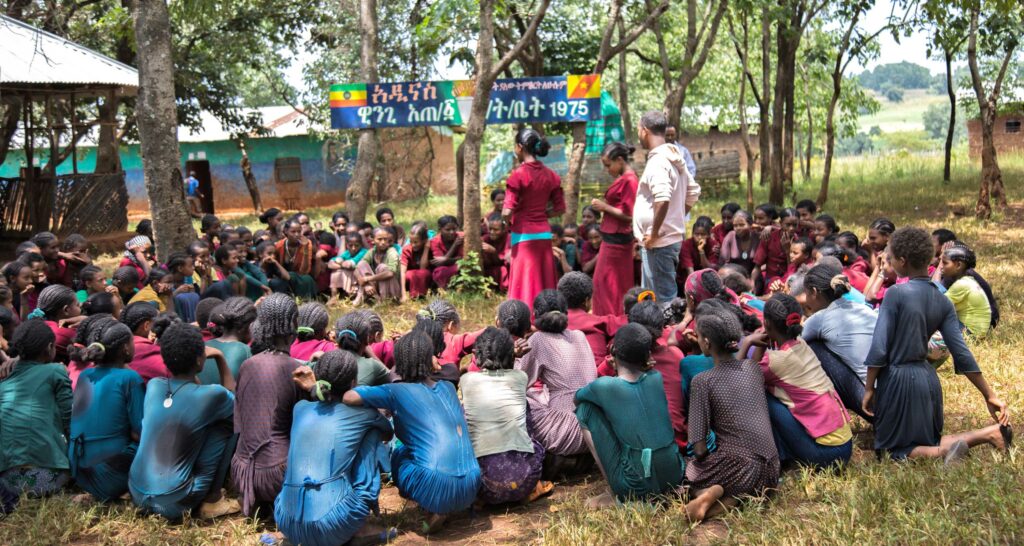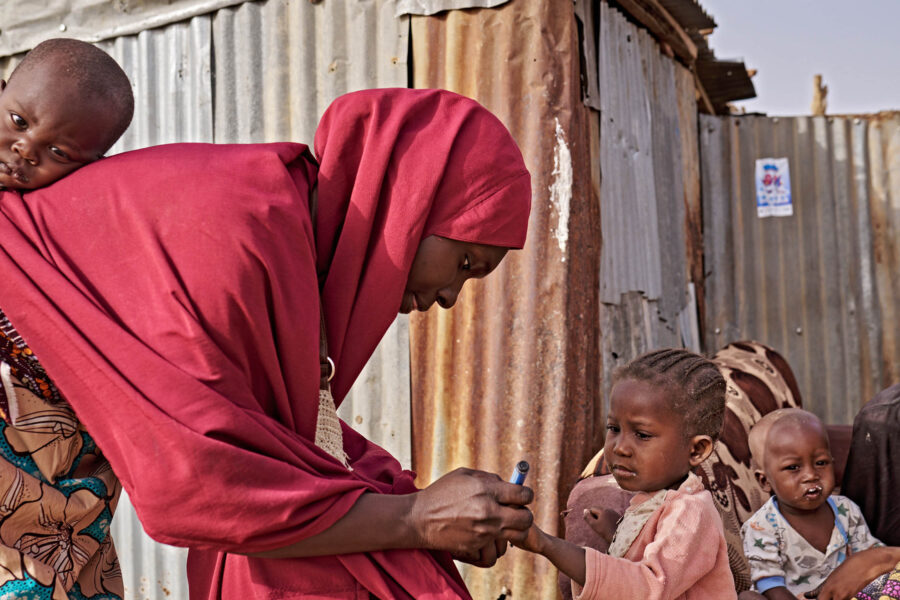Effective laws to achieve equality for women
The law is a critical enabler to empower women and challenge the status quo. While changing legislation is rarely straightforward or without resistance, there are encouraging signs that more countries are embedding women’s rights into national laws – others must follow suit
Gender — Global

At the halfway point of the 2030 Sustainable Development Agenda, gender inequality remains entrenched. Women continue to face poor health outcomes that are deeply rooted in social determinants, unequal power relations, and institutional structures that uphold the status quo.
Law can be a powerful tool for challenging that status quo. Despite the length and complexity of legislative processes, laws that are carefully designed, enforced, evaluated, and financed can be highly effective in advancing not just gender equality but also progress across the Sustainable Development Goals (SDGs).
Intersecting discrimination across all domains
Discrimination occurs across all domains of women’s lives, and so each domain requires defined legal protection. This includes civil rights and freedoms such as political participation and freedom of movement, as well as protection from violence. Equally important is freedom from discrimination in education, employment, health, and family life – for example, a woman’s right to choose the number and spacing of her children, and the outlawing of child marriage.
Designing effective laws to achieve equality for women involves recognizing where existing laws are harmful to this goal, and revising or repealing them. It means ensuring that laws are widely understood by both public officials and society at large, including women of all levels of education. Moreover, it requires implementing comprehensive legal protections that are often strongly resisted by governments. For example, the inclusion of marital rape in domestic violence legislation remains one of the most highly contested recommendations made by the UN’s Committee on the Elimination of All Forms of Discrimination Against Women (CEDAW).
Effective laws must recognize that women experiencing multiple, intersecting forms of discrimination face disproportionately poor health outcomes and barriers to their well-being. Women experiencing gender-based violence are at increased risk of depression and a lack of access to justice, while those experiencing gender-based poverty can face a lack of social protection. For many refugee, asylum seeker, and migrant women, poor working and living conditions are a daily reality, as is social exclusion and threat of violence for some women identifying as LGBTQIA+. Taking an intersectional approach is essential in designing effective laws to achieve equality for women.
Using international human rights law as a tool
International human rights law can help direct the development of domestic laws through global standard-setting, providing a legal and normative framework, vocabulary, and guidance for actions to promote gender equality and women’s health and well-being. Furthermore, treaty bodies such as the CEDAW Committee can use tools to ensure laws are aligned with human rights principles. These tools include:
- coercion (highlighting the costs of non-conformity with human rights norms)
- persuasion (encouraging social learning about the health consequences of laws); and
- acculturation (pressuring governments to assimilate to human rights norms)
CEDAW represents something of an international bill of rights for women, but it isn’t a perfect tool. Poverty is not explicitly included in the Convention, for example. Nevertheless, the CEDAW Committee has achieved significant successes in encouraging governments to introduce human rights-aligned laws to advance equality. Further, it works to support frameworks such as the SDGs by providing a legally binding treaty. CEDAW addresses gaps and shortcomings of the SDGs with a more detailed and comprehensive framework, while the SDGs offer a more holistic approach, covering broader social and economic factors that contribute to inequality and discrimination.
Policymakers, legal practitioners, and scientists must work together to overcome their disciplinary blind spots and co-design laws. Scientists often overlook important theoretical questions when advocating for law and policies aimed at improving women’s health. Meanwhile, legal scholars may overlook effectiveness, cost-effectiveness, and the acceptability of laws to the women they impact. A multidisciplinary approach employing all relevant tools and frameworks will be crucial to ensuring women and girls are not left behind as we attempt to accelerate the SDG agenda.
Designing effective equality laws
Meaningful consultation
Meaningful consultation is critical to ensure that laws are responsive to the needs, perspectives, and experiences of all relevant stakeholders, including local communities, grassroots groups, and civil-society organizations. Without this, laws may be ineffective or unacceptable to the women they aim to assist and may even reinforce existing inequalities. If women are not consulted in the design of laws pertaining to land ownership or inheritance, which is often closely linked to gender-based poverty, they may be less likely to participate in land-related decision-making processes, further marginalizing them and effectively perpetuating gender inequalities.
Changing harmful norms
If work is not done to educate key stakeholders and change harmful social or cultural norms, laws can drive practices underground. In some African countries that have banned female genital mutilation, families have crossed borders into neighboring countries where the practice is still legal. Then, when life-threatening complications occur, families may not access health services due to fear of prosecution.
Enforcement
For laws to be effective, sanctions must be placed on those contravening them in ways that are sensitive to women and their families. For example, carceral approaches can sometimes exacerbate poverty or fail to address root causes. Equally important is ensuring that legal institutions such as the judiciary, legislative bodies, and human rights machinery are responsive to the needs of all women. Many women face financial, geographic, and language barriers when trying to access justice. In addition, discrimination, fear of retaliation, or lack of awareness or trust in the justice system can prevent women from seeking legal recourse or obtaining legal representation and assistance. Stigma and discrimination are also relevant here. Even where progressive laws are introduced – such as the legalization of abortion – advocates report that stigma and discrimination can prevent women from accessing essential health and social services.
Evaluation
Poorly designed and discriminatory laws can have serious health consequences. We need to systematically evaluate the impact of laws on population health in terms of power, effectiveness, acceptability, and sustainability. This requires collecting comprehensive health and social data, disaggregated in meaningful ways, including for women living in rural areas, experiencing poverty, and with refugee or asylum-seeker status. This data is vital to hold governments to account for human rights violations against women.
Understanding historical context
Colonization has had a significant impact on the rights and status of women in many countries, especially in the Global South. Understanding this historical context and meaningfully acknowledging the roots of the current human rights situation for women is crucial for developing strategies to address ongoing challenges. Colonial laws in many countries were used to suppress women’s rights – for example, by:
- denying women the right to own or inherit property, which limited their economic independence
- treating women as legal minors, denying them the right to vote or enter contracts
- requiring permission from male relatives for women to marry
Governance and financing
As with any infrastructure project, thought must be given to how laws are governed and financed. Laws must be allocated sufficient human, financial, and technical resources for implementation and monitoring, recognizing that financing models that are effective and sustainable in high-income countries may not be appropriate for countries experiencing humanitarian crises or with underdeveloped legal infrastructure. Gender focal points within all ministries and agencies are needed to coordinate and promote gender-responsive laws across different levels of government.
Recognizing complexity
Finally, laws should not be viewed as single interventions. All laws interact with complex environments, including other laws, and this should be reflected in the way they are designed, implemented, monitored, and enforced. For example, employment laws governing hiring practices and pay can impact women’s ability to access healthcare and education, while inheritance laws have been a core driver of gender-based poverty for generations of women.
Reasons for optimism
Laws are hard to change. They are the result of long and complex legislative processes, and are deeply ingrained in a society’s political, social, and economic systems. Legal protections aimed at achieving equality often challenge traditional power structures and societal norms, and this can lead to fierce resistance from governments, special interest groups, and some communities.
However, my recent research examining government responses to CEDAW Committee recommendations provides welcome grounds for optimism. My analysis found that almost half (46%) of CEDAW’s law-related recommendations had been implemented, including laws that:
- improve access to health for women experiencing poverty
- streamline visa approvals for refugee, asylum-seeker, and migrant women
- establish new governance structures to combat gender-based violence
In addition, the analysis showed that countries across all income groups implemented similar proportions of the CEDAW’s Committee’s law-related recommendations, proving that progressive law reform is possible everywhere. With just seven years left to achieve the SDGs, all stakeholders must make better use of this powerful tool if we are to advance gender equality and other goals, leaving no woman or girl behind.





